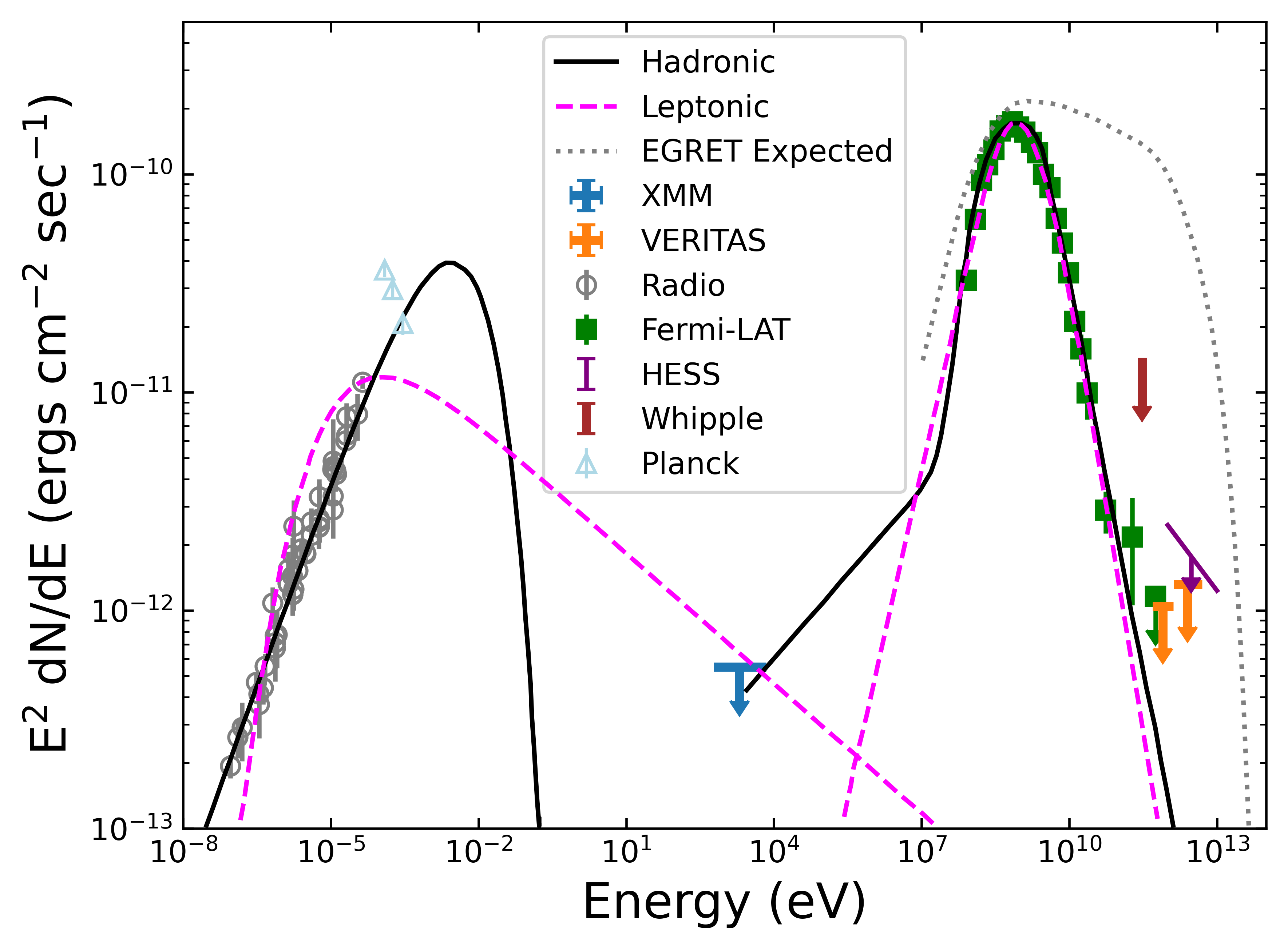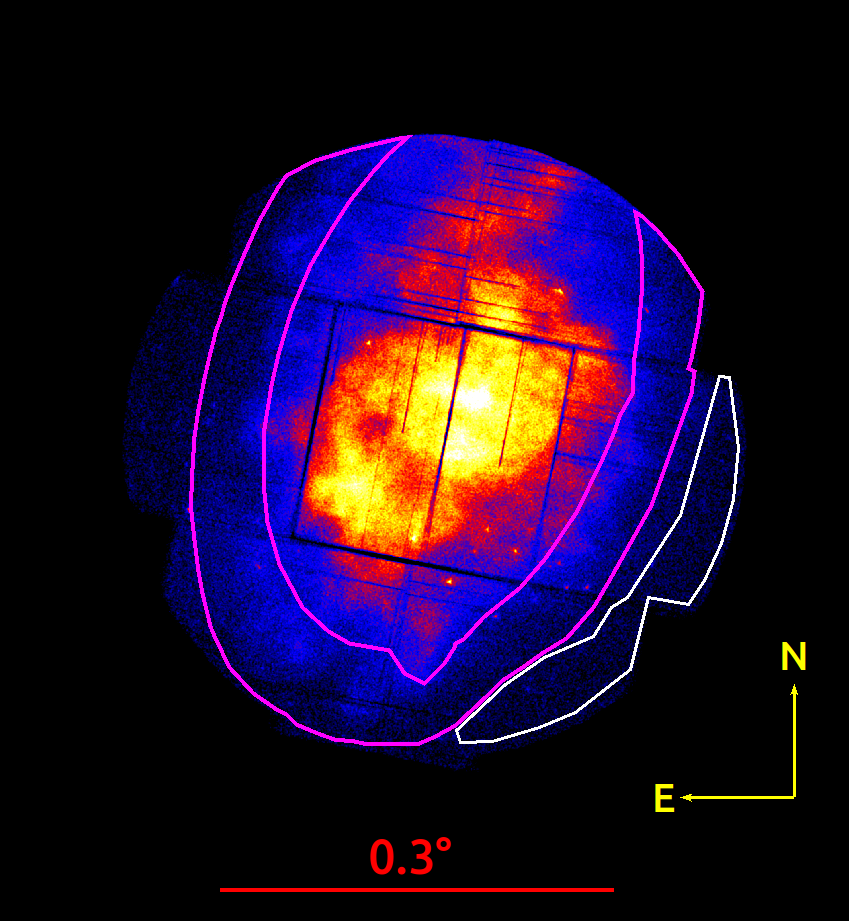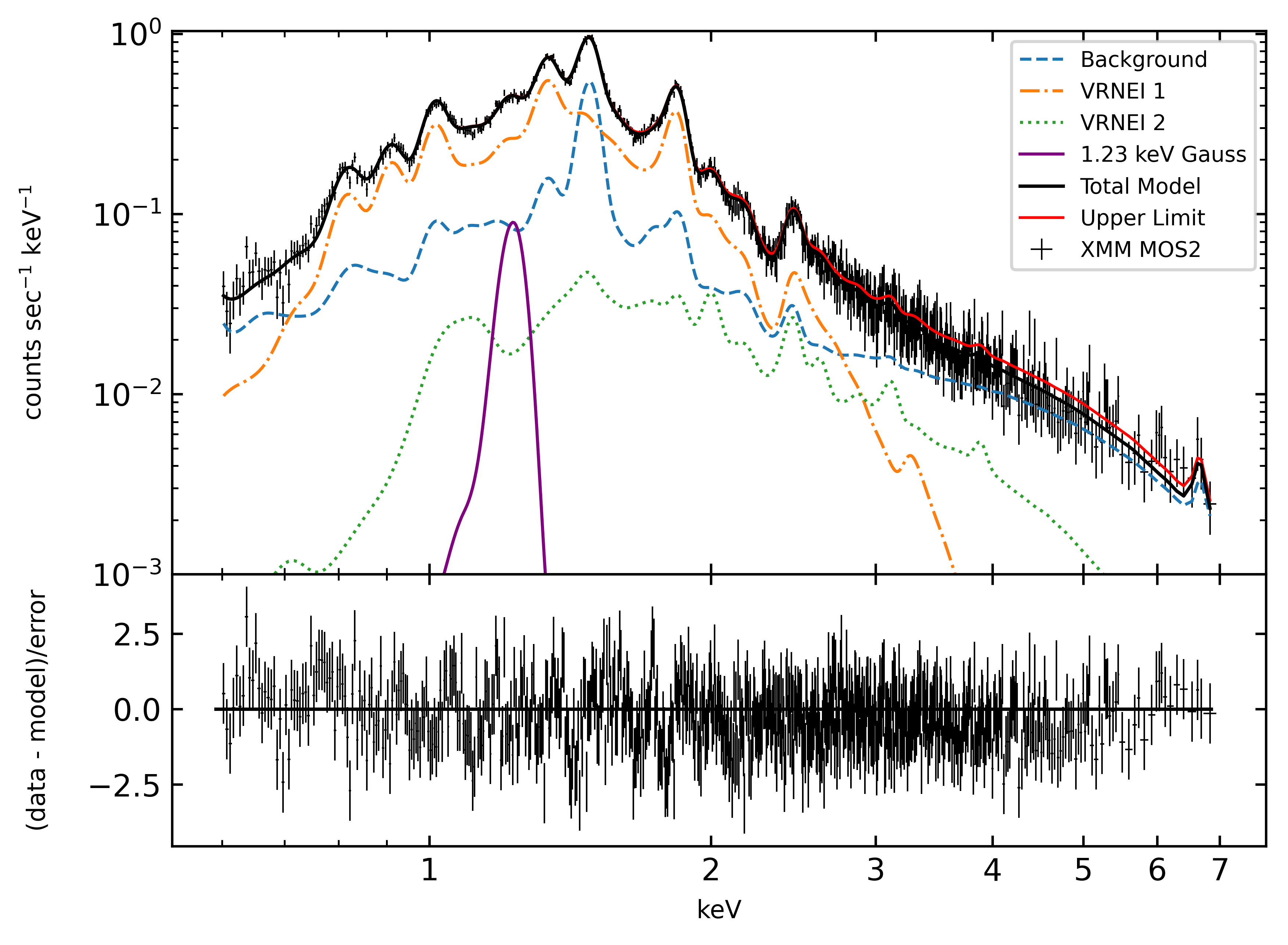
Reference: A. Archer et al. (The VERITAS Collaboration), ApJ 983, 73 (2025)
Full text version
ArXiv: ArXiV: 2503.09778
Contacts: Matthew Millard
Observations of GeV gamma-ray emission from the well-studied mixed-morphology supernova remnant (SNR) W44 by Fermi-LAT and AGILE imply that it is a site of significant cosmic ray acceleration. The spectral energy distribution (SED) derived from the GeV data suggest that the gamma-ray emission likely originates from the decay of neutral pions generated by cosmic-ray interactions. It is essential to measure the SED of W44 in the X-ray and very high energy (VHE) gamma-ray bands to verify the hadronic origin of the emission and to gauge the potential contributions from leptonic emission. We report an upper-limit of the nonthermal X-ray flux from W44 of 5 x 10-13 erg cm-2s-1 in the 0.5 - 8.0 keV band based on ~300 ks of XMM-Newton observations. The X-ray upper limit is consistent with previously estimated hadronic models, but in tension with the leptonic models. We estimate the VHE flux upper limit of ~1.2 x 10-12 erg s-1 cm-2 in the 0.5 - 5.0 TeV range from W44 using data from the Very Energetic Radiation Imaging Telescope Array System (VERITAS). Our non-detection of W44 at VHE wavelengths is in agreement with observations from other imaging atmospheric Cherenkov telescopes (IACTs) and is perhaps consistent with the evolutionary stage of the SNR.
FITS files: N/A
Figures from paper (click to get full size image):



